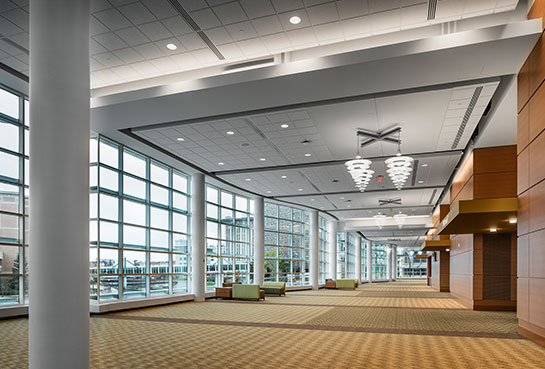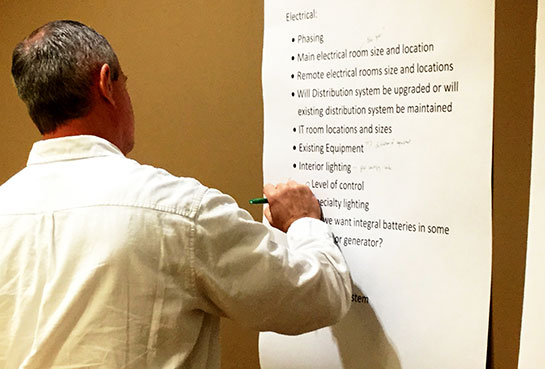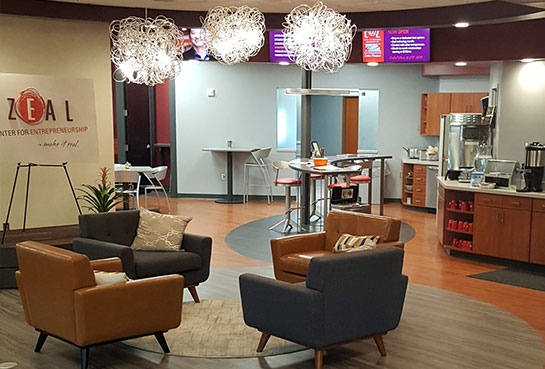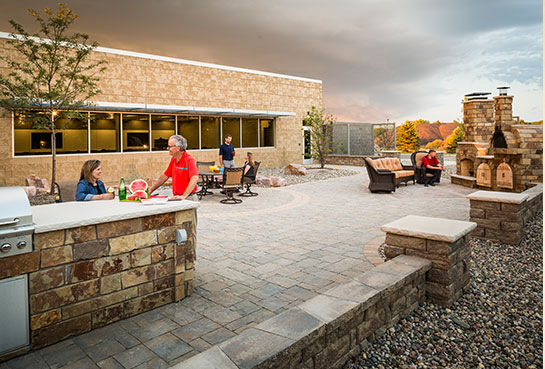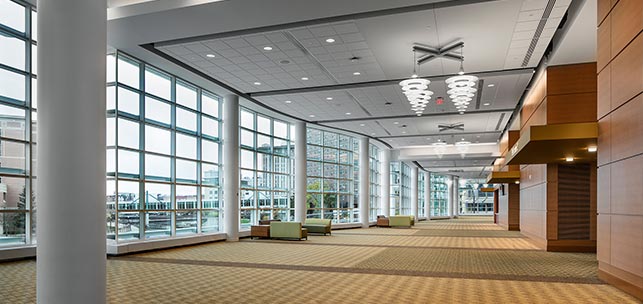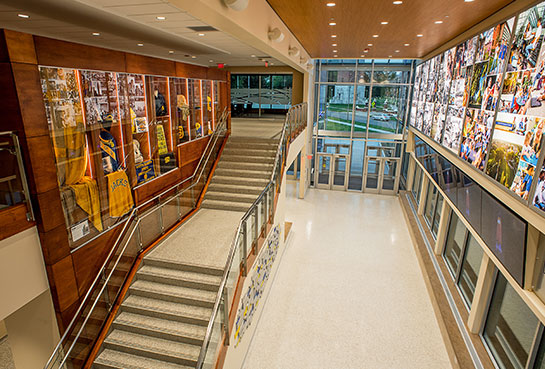Business and organizational leaders rally around the idea of “going green”—especially because energy-efficient buildings create operational savings. They consume less electrical power and fuel, and they need less water. It doesn’t hurt that these improvements often generate positive feelings among potential customers.
To fully capture their return on investment in green initiatives, leaders must select the right options to fit their culture, market, and budget. They should consider intangibles along with a huge chunk of change that isn’t as commonly linked to sustainability practices: salaries and other personnel expenses, including the high price of employee turnover.
“Energy costs for a typical office building are about one to two dollars per square foot each year. Salary costs usually are 50 to 100 times that number,” says Roger Nikolas, an Associate and Senior Mechanical Engineer at TSP, Inc. “If people aren’t feeling good or they’re taking more absentee days because they just aren’t comfortable at work, those costs in lost productivity are going to outweigh anything you’d pay in energy bills. Nothing should trump comfort.”
Today, the concept of sustainable design extends beyond a structure’s ecological footprint. Thoughtfully developed work settings, educational facilities, community buildings, and healthcare centers are not only better for the environment but also contribute to the well-being and happiness of the people inside. The open-space, collaborative workspace trend complicates the issue. Aside from disagreements over music and perfume, it’s challenging to balance the climate-control wishes of dozens of people—with their varied metabolic rates and clothing choices—all in the same, large room.
Click here to see a list of “easy” and “moderate” steps you can take now to get started in greening up your facilities.
The human factor
The most efficient design and features aren’t sustainable unless people are willing to establish and maintain new habits. It’s true for a range of upgrades, from new Energy Star appliances in the breakroom to a small-scale building renovation or a complete overhaul of HVAC and electrical systems. LED lights, for example, are a smart choice for many buildings. But they won’t save as much on utility bills if fixtures aren’t turned off when everyone leaves the meeting room.
“The building can do the heavy lifting, but we need to support that by being conscious about how our daily activities affect energy and resources,” says Allison Dvorak, a TSP architect who also is certified in passive-house design. Those rigorous standards for airtight structures and minimal energy consumption exceed the LEED guidelines issued by the U.S. Green Building Council (USGBC). “If something isn’t a fit for how you run your business or it isn’t functional for your people, it’s going to become a burden. It’s something to check off a list instead of something that comes from an understanding of how people use a space and the resources there.”
Scroll down to see a photo gallery that illustrates several sustainable strategies.
Earlier this month, Dvorak co-presented a session on people-based sustainable design at the Rocky Mountain Green, a regional USGBC conference in Denver. Dvorak’s group showed how a person-centered approach to barrier-free design for individuals with disabilities results in better buildings for all users. Attendees included ADA consultants, architects and landscape architects, engineers, and educators.
“This is a bit of a different approach,” Dvorak explains. “It bases sustainability on how we take care of one another by respecting our common home—the earth. If we don’t do that now, we won’t have anyone or anything to take care of in the future. It’s a much more human focus. … We have to move beyond the mindset that green and accessible designs are special accommodations and recognize that these changes benefit everyone’s experience.”
“If something isn’t a fit for how you run your business or it isn’t functional for your people, it’s going to become a burden.” — Allison Dvorak, TSP Architect | Certified by Passive House Institute
Changing perspectives
One of the most visible changes often is among the most popular with employees. Daylighting reduces the use of indoor lighting by bringing sunlight into a building. It also opens up the view for workers and makes your office or storefront more inviting to visitors. Additional or larger windows are the most common option, but some businesses take it a step further with skylights or interior wall systems whose glass panels allow light to penetrate far into central spaces.
“Maybe you’re still working within your same walls, but instead of arranging enclosed conference rooms or private offices around that perimeter, you’re looking for more opportunities to get light throughout the building,” says TSP Principal and Senior Architect Michelle Klobassa.
A LEED Accredited Professional with an advanced Building Design + Construction endorsement, she notes that many clients want to incorporate green design principles but don’t want the full expense or checklist that LEED certification requires. Even so, TSP has built a legacy of delivering greater value by exceeding owner expectations. Sustainability is no exception: Augustana University’s Froiland Science Complex was designed and submitted for Silver-level certification but earned the higher Gold certification at no extra cost. It’s TSP’s third project in South Dakota to accomplish that impressive feat.
“It’s interesting how this all has expanded,” Klobassa says. She’s seen an unmistakable shift in the way her industry thinks about sustainability. “In the 1990s, it was all about reduce, reuse, recycle. Now we assume people already are doing those things and we have to look at the next steps to keep improving the environment from a big-picture, holistic view.”
“Maybe you’re still working within your same walls, but instead of arranging enclosed conference rooms or private offices around that perimeter, you’re looking for more opportunities to get light throughout the building” — Michelle Klobassa, TSP Principal & Senior Architect | LEED Accredited Professional
Click any image in the gallery for a larger view.
- At the start of each project, leaders from various disciplines within TSP come together for a “First 1%” meeting to discuss overall goals as well as strategies to address crucial design, engineering, and occupant needs.
- As part of a rebrand at the Zeal Center for Entrepreneurship, TSP designed a central break room with multiple seating and collaboration areas. Energy-efficient appliances conserve electricity and encourage employees to wash dishes rather than use paper plates and plastic utensils.
- Concrete Materials’ corporate offices include an employee fitness center filled with natural light, a gathering space with kitchen, and an outdoor patio constructed from the company’s products. The different spaces encourage well-being through healthy habits, social interaction, and time outdoors.
- At the Mayo Civic Center, the “wave wall” echoes the curves of the Zumbro River. The transparency offers guests sweeping views of downtown Rochester, Minn., and reduces dependence on electrical lighting in pre-function areas. The Twin Cities’ daily business newspaper, Finance & Commerce, named the recently expanded complex one of its Top Projects of 2017.
- This wall of windows at the South Dakota State University Alumni Center offers a view of the Campanile. All that daylighting also reduces dependence on electrical fixtures. A memorabilia case and photographic installations invite people to take the stairs instead of the elevator.
